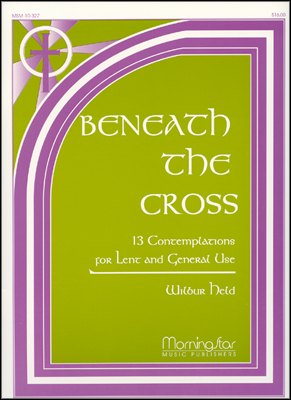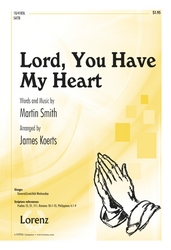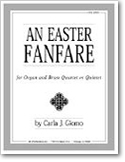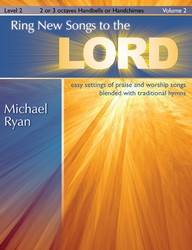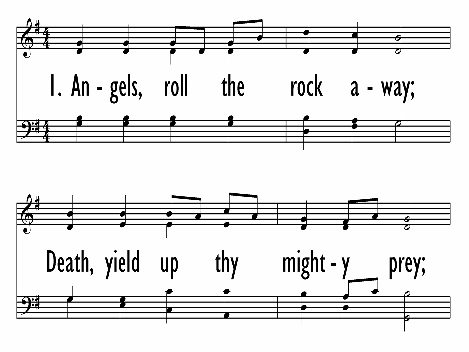In 1775, Dr. Thomas Gibbons sent an altered version of the hymn to the Gospel Magazine, where it appeared in the Sept. number in 9 stanzas of 4 lines. This with further alterations was included in 1784 in his Hymns adapted to Divine Worship, as No. 60, where he notes it as—-"Altered and enlarged from an H. in Messrs. Ash & Evans's Collection, p. 109." The confusion which has arisen respecting the authorship of this hymn is thus accounted for. Its use in one or another of its various forms is very extensive, and especially in America. [William T. Brooke]
Angels roll the rock away. T. Scott. [Resurrection and Ascension.] Contributed to Ash & Evans's Bristol Baptist Collection, 1769, as No. 106, where it is headed "The Resurrection and Ascension." It is in 6 stanzas of 4 lines, each stanza being followed by “Hallelujah," and is signed "G.," the signature of Thomas Gibbons; in the 2nd edition it was signed "U." i.e. "unknown," but in later editions, the 3rd, 1778, the signature was Dr. S., and the 5th, 1786, Dr. Sc—tt. In this form it passed through Rippon's Baptist Selection, 1787, into common use both in Great Britain and America, and these stanzas, more or less altered, are still in extensive use. In 1773, T. Scott republished the hymn in his Lyric Poems, &c, as No. 14, with a new first verse,
"Trembling earth gave awful sign,"
and the "Hallelujah" following each line of the first stanza, and with several alterations. Hatfield (Amer.) follows this 1773 text.
In 1775, Dr. Thomas Gibbons sent an altered version of the hymn to the Gospel Magazine, where it appeared in the Sept. number in 9 stanzas of 4 lines. This with further alterations was included in 1784 in his Hymns adapted to Divine Worship, as No. 60, where he notes it as—-"Altered and enlarged from an H. in Messrs. Ash & Evans's Collection, p. 109." The confusion which has arisen respecting the authorship of this hymn is thus accounted for. Its use in one or another of its various forms is very extensive, and especially in America. [William T. Brooke]
--Excerpts from John Julian, Dictionary of Hymnology (1907)


 My Starred Hymns
My Starred Hymns
